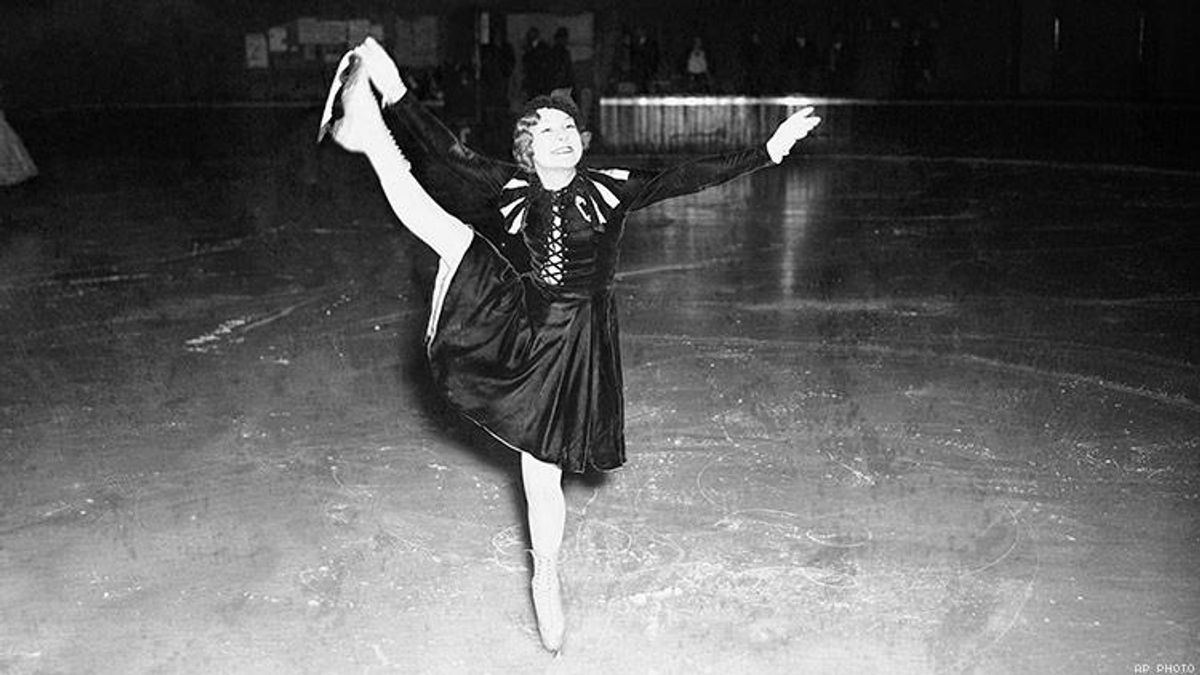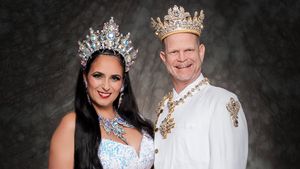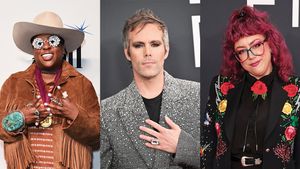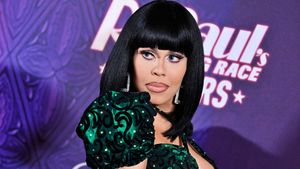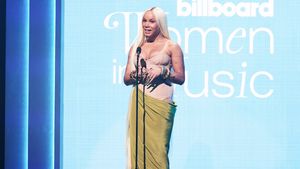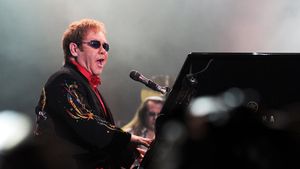Since British figure skater Madge Syers crashed the all-male World Figure Skating Championships in 1896 via a loophole in the system that opened up the sport to women, competitive skating has undergone myriad changes. Those alterations include continually raising skirt hems, doing away with compulsory or "school" figures in competition, and amping up the race to perfect the triple axel. But what hasn't changed since figure skating first became an Olympic sport in 1924 is that it's rather quaintly and sexist-ly referred to as a ladies' figure skating rather than women's while the sport has always been for men and not gentlemen.
Earlier this week Yuzuru Hanyu of Japan, Shoma Uno of Japan, and Javier Fernandez of Spain earned medals in the sport of Men's Figure Skating on the ice at the Olympics in Pyeongchang. Meanwhile, it would appear, at least linguistically, that Mirai Nagasu, who became the first American woman to land a triple axel at the Olympics (during the team competition), was participating in a much daintier sport -- one reserved not for women but for "ladies."
"Woman," according to Merriam Webster, simply means "an adult female person." But dig into the multiple definitions of "lady" and it means everything from "a woman of superior social position" and "a woman of refinement and gentle manners" to the fairy-tale definition, "a woman receiving the homage or devotion of a knight or lover."
That's a lot of pressure to put on women to be on the receiving end of attention from a knight while also demanding they pull off Salchows and lutz jumps along with camel spins and step sequences in a program. Meanwhile, the males of the sport, the "men," need only to exist as "an individual human; especially: an adult male human," according to Merriam Webster's definition of the word.
While it's not difficult to understand the sport of figure skating's use of "ladies" at its inception in the late 19th-century, there's no clear reason as to why the sport has clung to the term that implies requirements of refinement and gentleness from its participants that likely worked against powerhouse women like Tonya Harding and Surya Bonaly(who pulled off crowd-pleasing backflips in competition).
A no-frills answer to why figure skating has remained the purview of ladies throughout suffrage, second- and third-wave feminism, and the record-breaking Women's Marches, rather than receive a modern update to "women" came via the International Skating Union's Communications and Media Coordinator Selina Vanier.
"The ISU was founded in 1892 and since then the term 'ladies' was included in the ISU Constitution and Regulations," Vanier wrote in an email to The Advocate from Pyeongchang. "Since then the term has not been changed and in order for it to change, a proposal has to be made to the ISU Congress (consisting of all ISU Members) who would have to vote in favor of the change."
But veteran writer Philip Hersh (formerly of The Chicago Tribune) offered a pointedly less anodyne answer to the question of why figure skating for women is still called ladies.'
"Because men with antediluvian attitudes still run these sports. It is old-fashioned at best, patronizing at worst," Hersh wrote to The Advocate from South Korea, where he is currently covering the 19th Olympic Games of his career.
Hersh, who said he never referred to the sport as "ladies" during the 10 Winter Olympics he previously covered and still doesn't if he can help it, went even further in calling out those hoary men at the head of sports like figure skating and skiing (which also still uses ladies'). It was bolstered by tabloid media but too much ado was made about what was dubbed a "wardrobe malfunction" earlier this week during the ice dancing competition. France's Gabriella Papadakis and Guillaume Cizaron performed a moving, silver-medal winning program that was sadly discussed at length in the press, not for their artistry but because Papadakis's nipple poked out of her outfit during a move. The archaic thinking about a woman's flesh was spurred by gossip magazines but the reaction is still indicative of the archaic attitudes around figure skating.
"It's like the comment a colleague made after the ice dance costume malfunction when I offered that I couldn't understand why the sight (even briefly) of a woman's nipple still was such a big, prurient deal," Hersh said. "Her reply: 'As long as there still are men, it will be.'"
"So sadly true," he added.
While writers like Hersh have abandoned "ladies'" to refer to the women who train for decades, the powers that be at the International Skating Union and the International Ski Federation, which launched "Ladies'" Snowboarding at the Olympics as recently as 1998, are still distinctly Jane Austen-esque in their use of language. Meanwhile, Winter Olympic sports governed by bodies including the International Bobsleigh and Skeleton Federation and the International Ice Hockey Federation have arrived in the 21st-century. Afterall, the United States just won a gold medal in Women's Hockey on Wednesday, not in ladies' hockey.
At a crucial juncture for women when the national conversation since October has largely revolved around the #MeToo movement, Time's Up, and on closing the gender pay gap, the stark sexism in calling a sport "ladies'" when the equivalent for male athletes is "men's" has not gone unnoticed.
"Words and labels matter. It's 2018. If the ISU (International Skating Union) and IOC (International Olympic Committee) can't part with 'ladies,' then they have to use the term 'gentlemen' for the men. It's either men and women, or ladies and gentlemen, like at Wimbledon," veteran sportswriter Christine Brennan wrote in USA Today earlier this week. "To mix and match as they are doing now sends the worst message at the worst possible time: that the ISU and IOC find sexist language acceptable, which is nothing if not completely unacceptable."
The language in tennis of referring to the participants as "ladies" and "gentlemen," although it telegraphs a certain Victorian landed-gentry vibe of wealth and privilege, at least offers parity in terms of expectations based on gender. Afterall, the goal for women in the boardroom, the bedroom, on the tennis courts, and on the ice, is equality.
